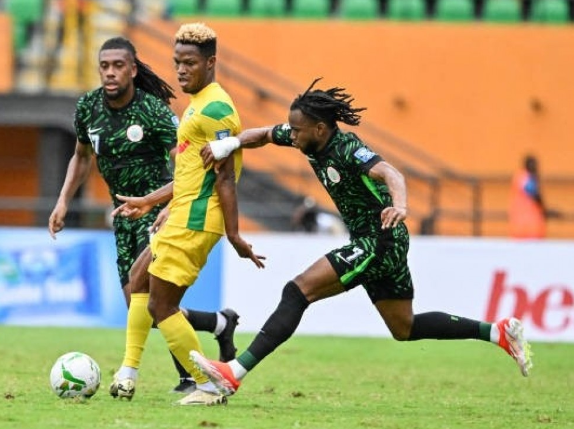
In 1959, to celebrate the 10th anniversary of the founding of New China and to welcome the first National Games, the Design Institute of Beijing Municipal Planning Administration (now Beijing Architectural Design & Research Institute Co., Ltd., or BADI for short) elaborately designed a Workers' Stadium covering an area of 35 hectares, with a floor area of more than 80,000 square meters, which had 24 spectator stands, and could accommodate 80,000 spectators. With 24 stands and a capacity of 80,000 spectators, it became the largest comprehensive stadium in China at that time.
This photo shows the Beijing Workers' Stadium at the beginning of its construction. Photo courtesy of Beijing Construction Institute.
This old industrial stadium has witnessed the vigorous development of sports in new China, and also recorded the changes of the city of Beijing. Since its construction, it has hosted the National Games, Asian Games, Universiade, Olympic Games and other large-scale international sports events. In the early days of its construction, almost all grand events to receive foreign dignitaries were held here. In addition, some important art performances and concerts were also staged here, and mass sports events such as the Beijing Spring Festival Race around the City were also held here.
The old Worker's Stadium is not only the holy land of Beijing soccer, but also an important base for China's national soccer team. in the 1990s, Beijing Guoan soccer team beat AC Milan and other international teams in Worker's Stadium, creating the legend of "undefeated in the Worker's Stadium". in 1996, the sport became the home of Beijing Guoan soccer team, and the spiritual home of Beijing fans. 2004, the Chinese men's football team won the second place in the Asian Cup. In 2004, the Chinese men's soccer team won the second place in the Asian Cup.
Even if the National Olympic Sports Center and the National Stadium "Bird's Nest" and other new venues have been built, the old industrial stadium in the hearts of Beijing people's position has always been unshakeable.
The old workplace is overstaying its welcome.
During the 1990 Asian Games, the 2001 World University Games and the 2008 Olympic Games, the Beijing Workers' Stadium underwent three large-scale structural reinforcements and upgrades of equipment and facilities. However, by 2008, the sports project had been in use for nearly 50 years, and the old building structure, which had overstayed its usefulness, was overburdened.
"In preparation for the Beijing Olympics, we have taken several technical measures to strengthen the main structure of the building and extend its service life by 12 years." The person in charge of the design of the renovation project of the Beijing Architecture Institute's industrial body introduced.
This photo shows the Workers' Stadium before reconstruction. Photo courtesy of Beijing Construction Institute.
In 2010, the I.G.S. was again remodeled with functional facilities. Despite four "surgeries", it is still unable to completely solve the outstanding safety hazards, non-compliance with seismic requirements, and outdated facilities and equipment in the old I-Sports Complex. Therefore, the old industrial stadium is in urgent need of upgrading and remodeling.
On December 1, 2019, the last game before the renovation was held at Gongti, with more than 50,000 fans on hand to watch the game and wave goodbye to the old Gongti.In August 2020, Gongti launched its protective renovation.
New Works Smart Low Carbon
The Workers' Stadium before the reconstruction is the largest comprehensive stadium in the east of Beijing, with a main building area of 64,000 square meters, equipped with a standard soccer field, 400-meter rubber runway and field events. According to the designer of Beijing Architecture Institute, the reconstruction of Workers' Stadium follows the principle of "traditional appearance, modern arena", realizing the organic combination of style protection and function enhancement.
This photo shows the façade of the renovated Workers' Stadium. Photo courtesy of Beijing Construction Engineering.
As one of the "Beijing Top Ten Buildings" in the 1950s, the old industrial stadium strives to maintain its "original flavor" in the process of renovation and reconstruction, with the stadium oval, façade and characteristic elements remaining unchanged. Beijing Architecture Institute designers said that before the renovation, nine groups of iconic sculptures were relocated to protect, after the renovation of the North Gate is located in the "male and female workers statues" reproduced in the original position.
While inheriting the historical and cultural features and preserving the building's urban memory, the new industrial stadium creates an intelligent, low-carbon modern venue with the help of advanced digital building technology.
For the first time, technology has been applied to the New Works to create an ultra-fine water spray cooling system, which allows for physical cooling with minimum energy consumption and improves the viewing experience in unfavorable weather conditions. Under special needs, the cooling mist system can be used by the medical sector for epidemic prevention and sterilization.
The new industrial stadium adopts intelligent operation and maintenance system, and the operator can control the operation of the whole stadium in real time, clearly and comprehensively through the big screen operation and maintenance "one map", which provides the basis for scientific decision-making on the maintenance of equipments, energy consumption management, disaster evacuation and so on.
The New Workplace Serves the Public
From the fans' point of view, the runway is canceled to shorten the distance between fans and players. Adopting the internationally popular grandstand bowl design, the grandstand is divided into four tiers: the center stand, the Club tier (box tier), and the upper stand, and increasing the slope of the grandstand to give fans an immersive experience.
The new industrial stadium creates the most momentum home fan stands with the original number 24. The bleacher seats are decorated in the colors of the image of the Beijing Guoan soccer team, providing 15,000 seats. After the renovation, the I stadium can accommodate nearly 68,000 spectators, increasing seat distance and row spacing to improve viewing comfort.
It is worth mentioning that the new industrial stadium has added a new shed covering all the spectator seats with functions such as sunshade, lighting, drainage and collection of water, snow melting, acoustic noise reduction, etc. The bleacher area is also equipped with a seat air supply system to protect the fans from the torture of wind and rain.
"We are particularly good at the design and operation of soccer culture and soccer spirit implanted in the new industrial stadium to create a soccer culture home." The designer of Beijing Construction Institute said, "We upgraded the function and display method of the Industrial Sports History Exhibition Hall, established the Industrial Sports Museum, built the Guoan Hall of Honor, and used high technology to comprehensively display the history of industrial sports and Beijing soccer, and spread the soccer culture."
The new industrial stadium also adds a large number of spectator lounges, provides light meals and soft drink services, and is equipped with high-definition broadcasting screens, which greatly enriches the fans' viewing modes and experiences, and expands the promotional space for the display of the sports industry and soccer culture.
After the game, the park and business district will take on the function of mitigation measures and diversion of the stadium's heavy passenger flow. Subway lines 3 and 17 are seamlessly connected to the new stadium, allowing spectators to enter the stadium and underground shopping mall directly from the subway station. In the future, the new stadium will become Beijing's iconic city, sports business card and vitality center.
News Memory:
Four reconstructions
1. Pre-Asian Games (1986)
As the main venue of the 1990 Asian Games and the final soccer stadium, Gongti Sports underwent three years of large-scale renovation, reinforcing the building's structure and removing the grandstand benches, replacing them with five-color seats: red, green, blue, yellow and brown. The torch stand and scoreboard were added, and the background stand was extended.
2. Before the Universiade (2000)
In order to prepare for the 2001 World University Games, the industrial stadium was partially reinforced and renovated, and a high-standard lounge and a press center were opened.
3. Pre-Olympic Games (2006)
In order to host the 2008 Olympic Games, the industrial stadium was structurally reinforced according to the 7-degree seismic defense standard, which solved the defect of the old industrial stadium without seismic defense. Lighting racks were added to the shed to meet the requirements of TV broadcasting lighting. The torch stand of the Asian Games was dismantled, and an oversized display screen was set up at the original location to broadcast pictures of the venue and public service advertisements after the games.
4. Professional soccer field renovation (2010)
According to Beijing's requirements, Work Sports plans to transform from a comprehensive stadium to a professional soccer stadium, including the elimination of the plastic track to an asphalt surface, the addition of bleachers, and the renovation of boxes.






























